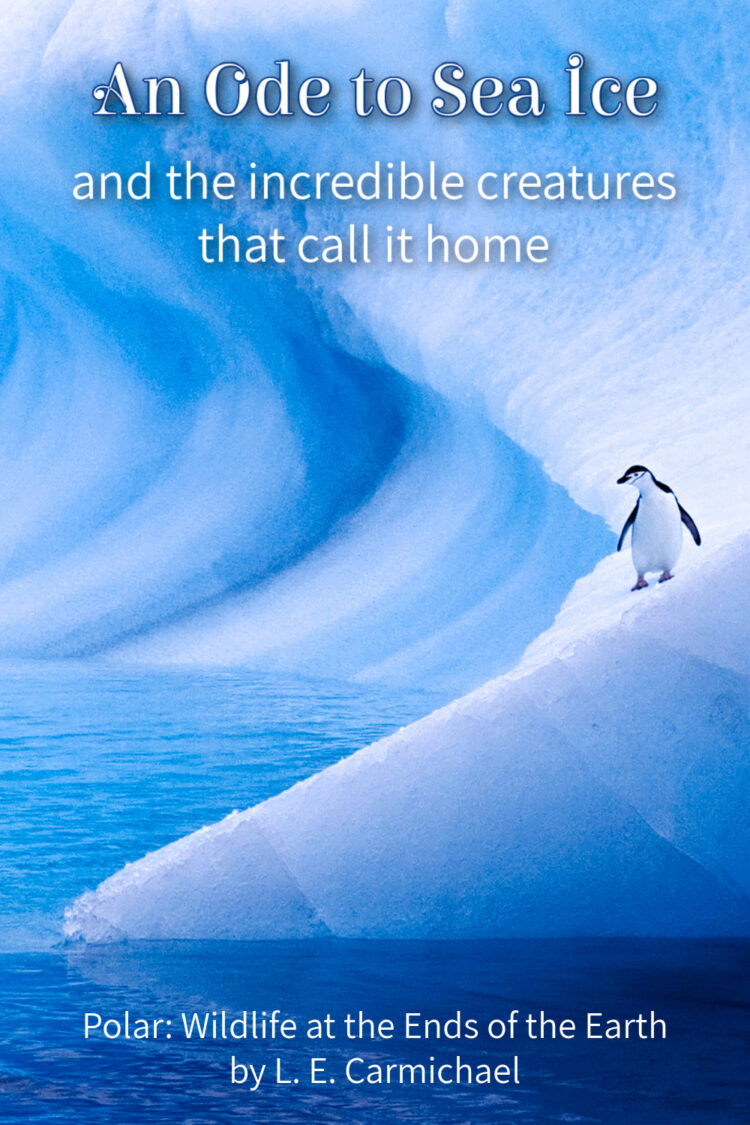It’s Arctic Sea Ice Day, which means the internet is about to be covered in polar bears. Don’t get me wrong – polar bears are awesome, and I would dearly love to snuggle me a bear cub, because they are nature’s plushies. But there are so many other animals that rely on sea ice, in both the Arctic and Antarctica, and their stories deserve attention today, too.
But First, a Few Words About Ice
There are two main types of sea ice: annual and multi-year. Annual ice is the kind that forms in the winter. Multi-year ice is the kind that stays frozen over the summer – the kind that forms the planet’s “permanent” ice caps. Because our climate is warming, less annual ice is forming, and summer melt is creeping closer to the poles. In many places, multi-year sea ice is also getting thinner, which suggests that multi-year ice might soon become annual ice.
And that’s going to have big consequences, because sea ice plays a huge role in polar ecosystems. Ice has a high albedo, meaning that it helps keep polar regions cool: cold poles moderate the climate of the entire planet. The formation and melting of sea ice also contributes to vertical ocean currents – currents that carry nutrients from the sea floor up towards the surface, where sun-loving ocean algae live. Called “upwelling,” this process feeds the algae, which feed krill and other tiny animals that form the basis of the ocean food chain. In Antarctica, algae (tiny plants) actually grow on the underside of the sea ice, forming “gardens” for krill to graze on in winter. Krill are food for everything from sea birds to whales to humans – your omega-3 supplements might be made from Antarctic krill.
A Resting Place
Seals, polar bears, and penguins all haul out onto sea ice – it’s a place to lie down and rest after feeding in the oceans. Emperor penguins are famous for incubating their eggs on a platform of solid ice, but many species of seals do it too. Some seals raise young on the surface of the sea ice. Ring seals (the polar bears’ favourite) dig sheltered dens in the snowpack that covers the ice.
Ring seals are famous for taking refuge in the ocean when polar bears approach; in Antarctica, Weddell seals escape killer whales by hauling out onto sea ice.
 A Nesting Place
A Nesting Place
Ever heard of ivory gulls? I hadn’t either, until I started researching Polar: Wildlife at the Ends of the Earth. They are a small, pure white gull species that lives in the High Arctic. Endangered in Canada and Near Threatened globally, ivory gulls were thought to nest in inland areas, on cliff faces or nunatuks (mountain peaks that stick up above the polar ice sheets). But in 2014, scientists discovered a colony of 60 adult ivory gulls nesting on an iceberg.
Icebergs aren’t technically sea ice, because they don’t form from ocean water. They’re chunks of frozen freshwater that have broken off the ends of glaciers and gone bobbing around the ocean like tub toys. Sometimes, big icebergs can ground themselves against the ocean floor, forming a stationary refuge. Scientists figure that nesting on this iceberg gave the gulls two advantages:
- Inland colonies can be as much as 100 km from open water where gulls fish. In contrast, the iceberg colony was right next to an all-you-can-eat seafood buffet. The adults saved a lot of energy commuting, which meant they had more food to pass on to their chicks.
- Total protection from terrestrial predators like arctic foxes, arctic wolves, and polar bears… meaning the only enemies the gulls had to watch for were coming from the skies.
A Place Called Home
In 2010, scientists in Antarctica sent a remote-operated submersible under the Ross Ice Shelf, which is about 250 m thick in the area they were exploring. Imagine their astonishment when they discovered a colony of sea anemones!
Most anemones anchor themselves on the ocean floor, waving up at the ocean life above. Not Edwardsiella andrillae – these hard core critters were anchored in the underside of the ice, with their tentacles dangling into the water below. All of the anemones were about the same size, and they were evenly-spaced along the ice shelf, suggesting the community had been there long enough to develop complex rules around personal space. Click through to see the pictures, which are amazeballs.
Scientists still don’t know how the anemones burrow into the ice or what allows them to live there – preliminary studies revealed no obvious adaptations. It would be a tragedy if the anemone’s home melted away before we have a chance to learn more about them.
Take Action
Want to help protect the habitats of all the animals that rely on Arctic and Antarctic Sea Ice? The Polar Presents Resource List includes a number of ways you can learn more, do more, and get more involved. Feel free to share your own ideas for action in the comments – I’d love to hear from you!
Teachers! I realize you’re celebrating the end of another school year and that planning for the fall is the last thing on your mind. But if you contact me before September 1 with code SOLSTICE23, I’ll give you 10% off the cost of a school visit. Visit my programs page to see how I can help your students kickstart their STEM learning!